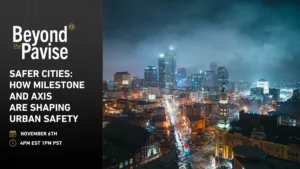How Digital Signage Can Elevate Experiential Design
Experiential design and digital signage work well together. Before the advent of digital signage, designing experiences was much more static. Digital signage takes it to a new level. But how?
To answer the question, Digital Directions host Tyler Kern spoke with Rich Archer, Creative Lead at Omnivex Corporation. Archer has been in the creative field for over 20 years, helping brands tell their stories boldly.
To kick off, Archer defined experiential design. “It’s a broad term, but it’s designing an experience. As a designer, our training is to design with the user in mind and to do so with a purpose. We’re shaping the experience of the end-user, and you can put everything about your brand into this environment.”
Employing digital signage in these settings just makes sense because of its inherent benefits. “You can change content, use video and graphics, and schedule content at different times. It naturally helps you design a better experience,” Archer said.
Archer noted that the many applications of digital signage, including wayfinding and interactive kiosks, all improve that audience’s experience. To illustrate it with real-world applications, Archer offered three great examples. “First is the Disney Store and all its interactive screens. Another is the San Francisco airport, which has a video kiosk with local artists, and you can make a playlist of videos.”
These two occurred in the brand’s space, but the last example goes outside the four walls. “McDonald’s celebrated the Big Mac anniversary by putting in digital signage billboards with cameras at bus stops, asking consumers to enter the Big Mac Dance Challenge. It’s like an interactive ad.”
Follow us on social media for the latest updates in B2B!
Twitter – @MarketScale
Facebook – facebook.com/marketscale
LinkedIn – linkedin.com/company/marketscale









